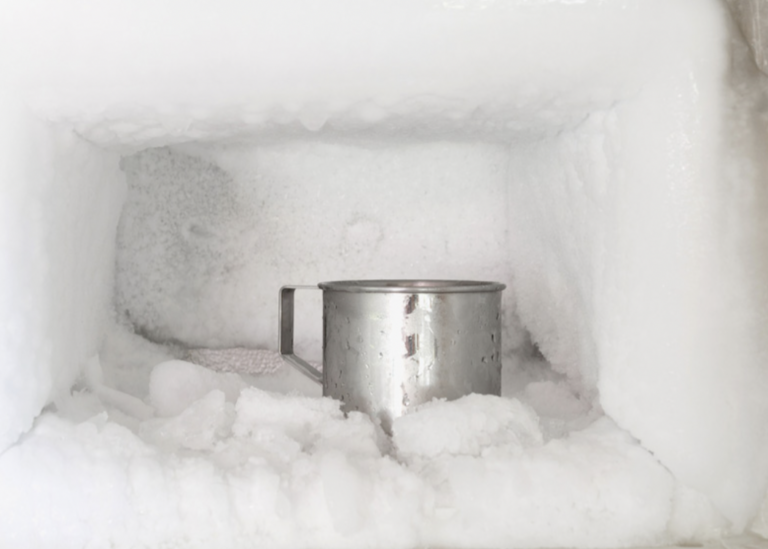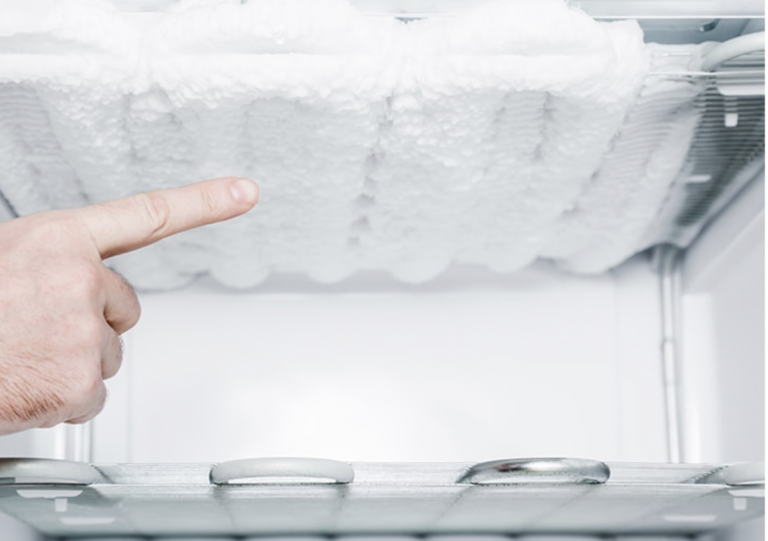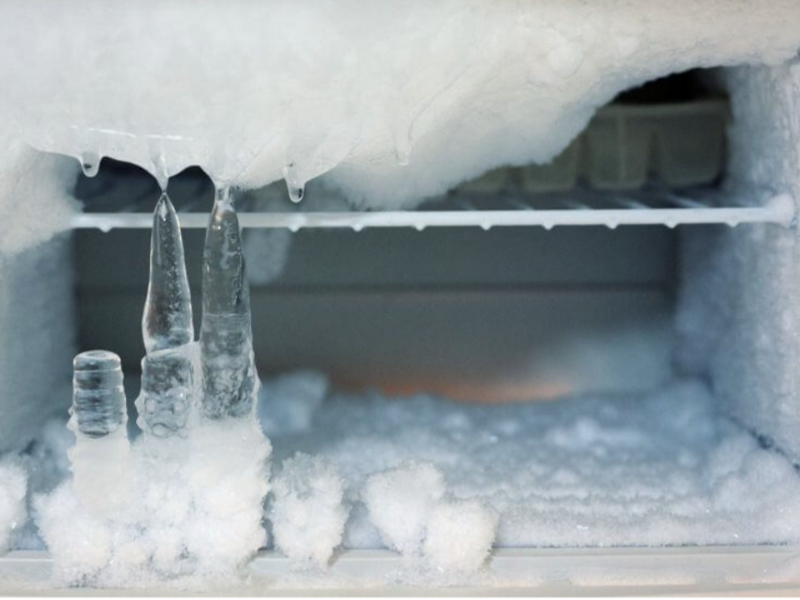Ice in the freezer
Frost buildup not only starts to take up valuable storage space in your
freezer, but it can also lead to unpleasant odors from the appliance. But what causes
such a freeze?
A common cause of this is when moisture comes into contact with the evaporator coils in your
freezer. After which it freezes and frost builds up. Another important
The cause is a damaged or worn door seal.
Its job is to keep the cold air inside the appliance while pushing out the warm air.
outside. Wear and tear over time can lead to cracks in the seal. So
This leads to moisture leaking into the freezer.
An open appliance door is another possible cause of frost build-up. Do not
forget to close it. Even a slightly ajar door left for a certain period of time
time, may cause the appliance to freeze.

This affects the flow of warm air into the freezer, while the cold air escapes. It should not
Some damages that lead to frost formation are also underestimated. One of them is
Defrost timer malfunction.
It controls the cooling and defrosting modes. Normally the timer works
on regular cycles throughout the day to prevent frost buildup on the coils
on the evaporator.
However, if it is damaged, the defrost mode may not turn on inside.
The appliance starts to form a large amount of ice. The reason for the accumulation of frost in
The freezer also has a damaged heater.
Its function is to melt the ice formed on the evaporator coils. Not on
Lastly, a broken thermostat is also a cause of frost accumulation in the appliance.
defrosting.

It monitors the temperature of your freezer's evaporator coils. The thermostat
signals when to turn the defrost heater on and off. With more attention,
frost accumulation can be avoided.
Here are five tips to help you prevent unwanted freezing in your
Freezer: Try not to keep the appliance door open when not necessary.
Check that nothing is blocking it from closing completely.
Organize your freezer. A tidy interior can help you
get to what you need faster by reducing the need to frequently
opening and closing the door.
Cool food before storing. Placing hot food in the freezer can
lead to the formation of moisture. Cool the food first and wipe off the condensation from the outside
side of the packaging before placing it in the freezer.
Check the door seal. Look for any visible damage or damage to the
its surface. Slowly run your hand around the outside perimeter of the closed door
of the freezer. If you feel a cold air leak, it may be time to replace
the seal.
Check the temperature. Make sure your appliance is set to the recommended temperature.
manufacturer's value, which is usually -18 °C. Use a freezer thermometer to
you monitor the temperature.
If the values in the device are too low or high, you may need to call
specialist. The most common causes of frost formation in the freezer are:
Damaged seal
Broken thermostat
Too much food is piled up in the appliance
